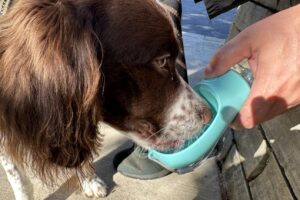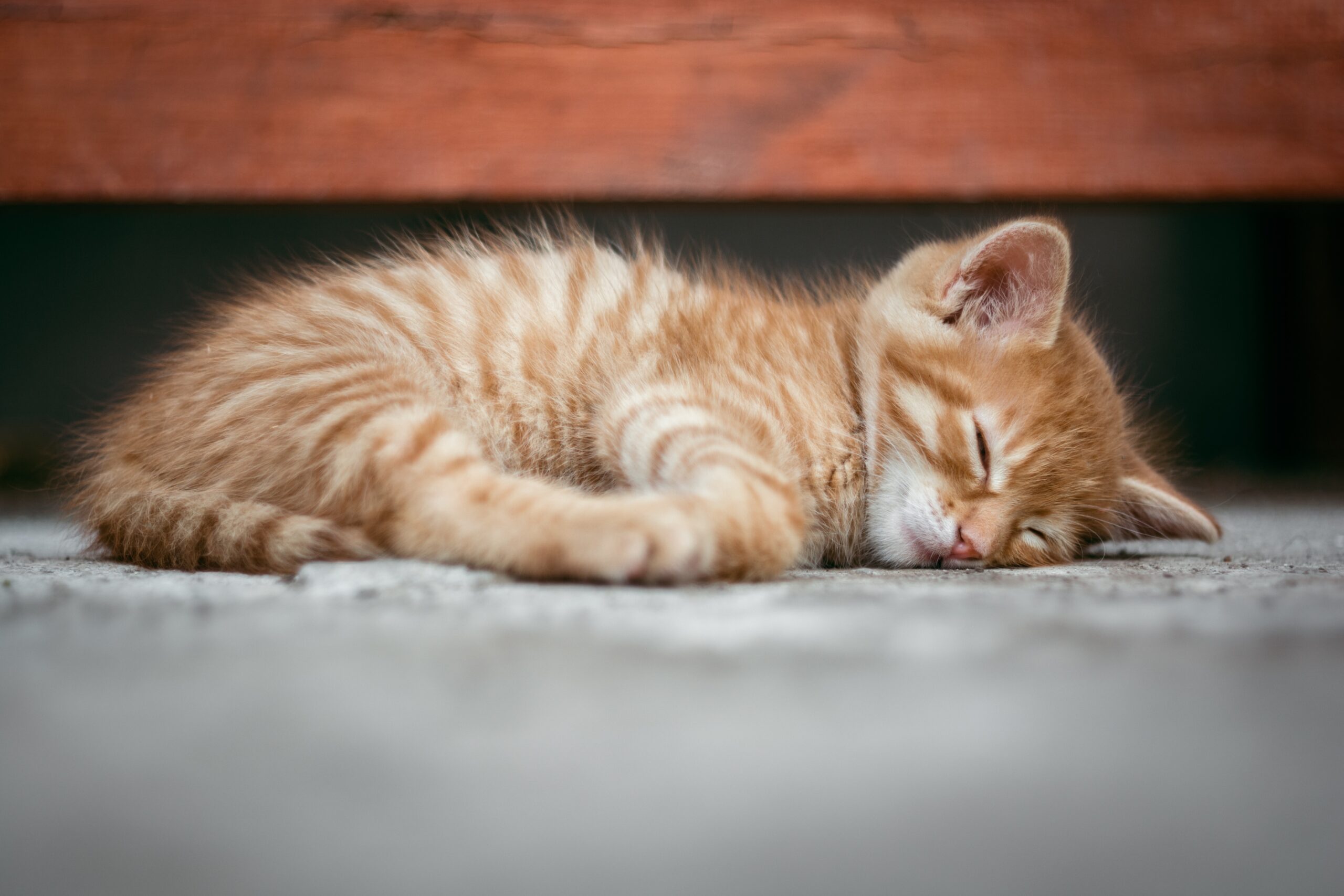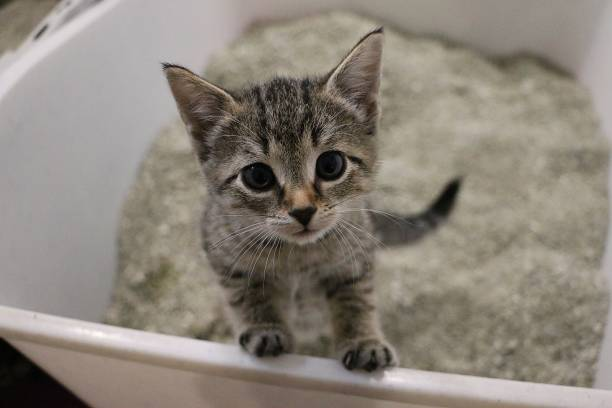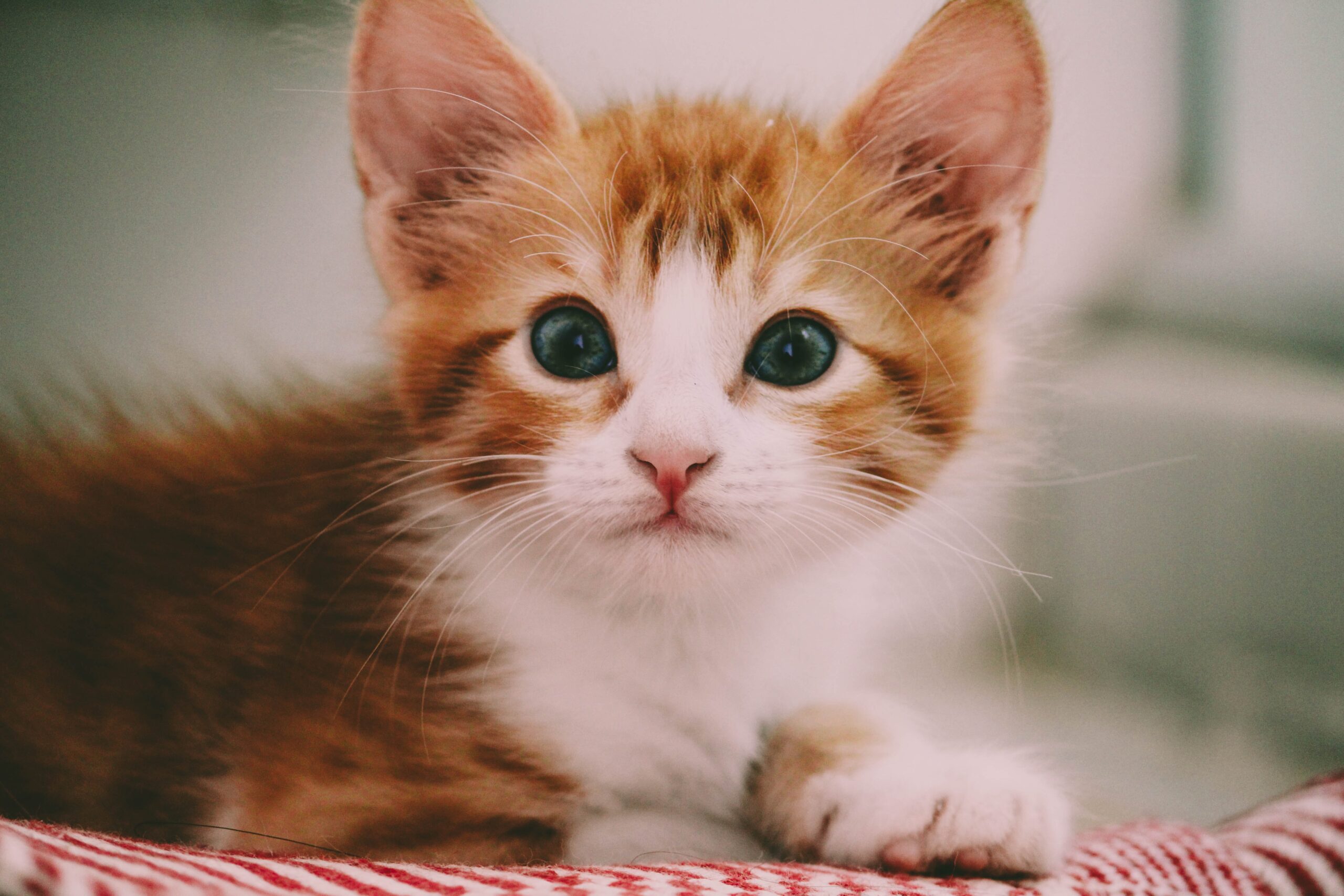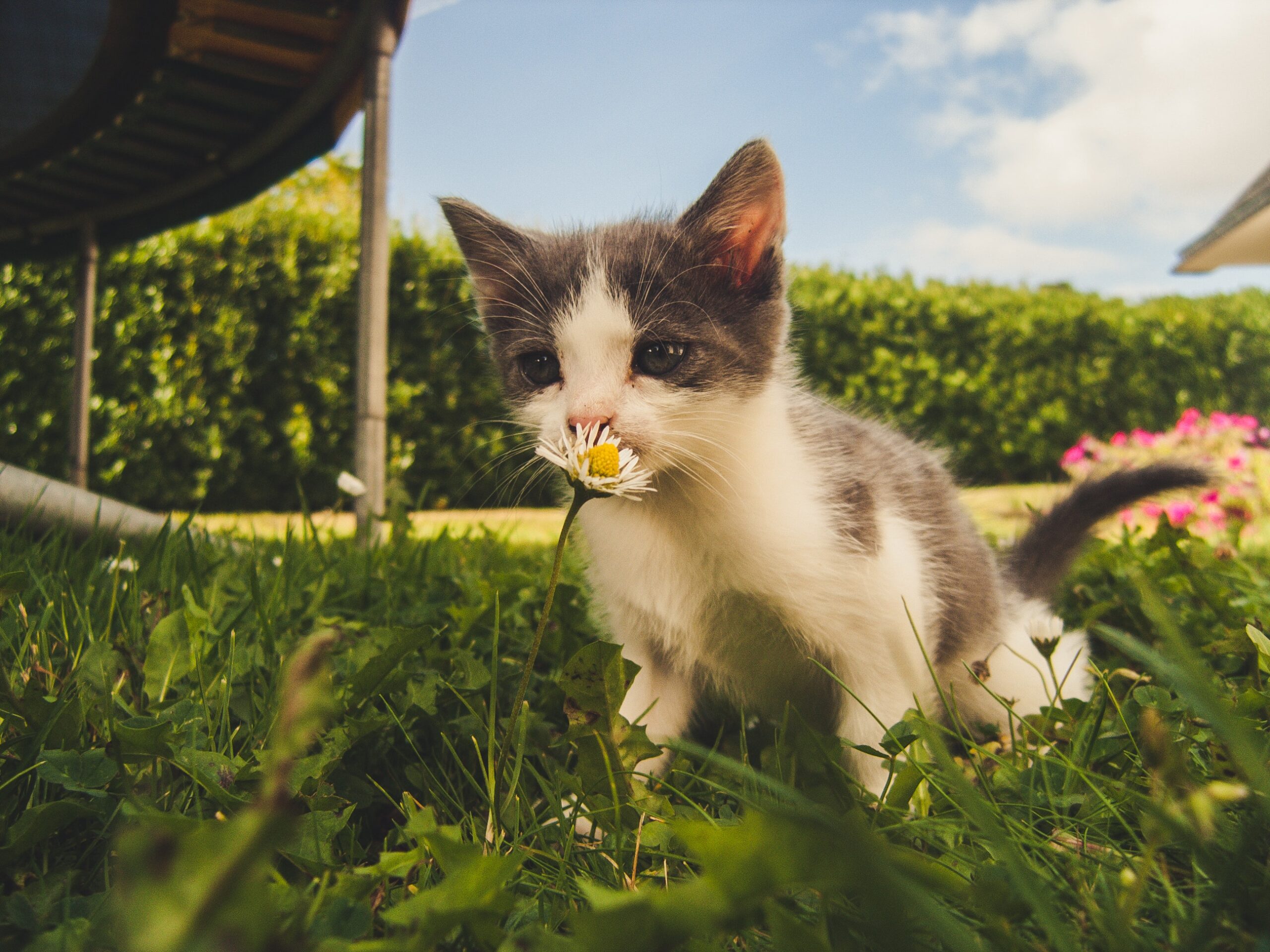Introduction
As loving cat owners, we all want to ensure the well-being and happiness of our feline companions. While we diligently attend to their food, shelter, and playtime, there’s one crucial aspect of their health that can sometimes go unnoticed – their dental health. Just like us, cats are susceptible to dental problems, and neglecting their oral care can lead to severe consequences.
A cat’s dental health plays a vital role in their overall well-being. Dental issues can cause not only pain and discomfort but also have far-reaching effects on their physical and emotional health. As responsible pet owners, it’s essential to be aware of the signs that indicate dental pain in cats so that we can take timely action to address any problems that may arise.
This article aims to enlighten cat owners about the significance of dental health in their furry companions and how dental pain can affect their quality of life. By understanding the signs of dental pain in cats, you’ll be better equipped to recognize potential issues and seek appropriate care from a veterinarian.
In this article, we will explore the common dental issues faced by cats, the signs that indicate dental pain, and the importance of seeking professional veterinary care. By the end of this article, you will have a comprehensive understanding of how to recognize dental pain in your cat and take proactive measures to safeguard their oral health. Remember, a healthy mouth leads to a happier and healthier feline friend!
Understanding Dental Issues in Cats
Common dental problems in cats (gingivitis, periodontal disease, etc.)
Just like humans, cats can experience a range of dental issues that can impact their oral health. Some of the most common dental problems in cats include:
- Gingivitis: Gingivitis is a condition characterized by inflammation of the gums. It occurs when plaque, a sticky film of bacteria, builds up on the teeth, leading to irritation and redness of the gums. If left untreated, gingivitis can progress to more severe forms of gum disease.
- Periodontal Disease: Periodontal disease is a more advanced stage of dental problems in cats. It involves the infection and inflammation of the structures supporting the teeth, including the gums, ligaments, and jawbone. This condition can lead to tooth loss and severe pain if not addressed promptly.
- Tooth Resorption: Tooth resorption, also known as feline odontoclastic resorptive lesions (FORLs), is a common dental issue in cats. It occurs when the cells that break down tooth structure become overactive, leading to the destruction of the tooth’s enamel and dentin. This condition can be painful for cats and often requires dental extractions.
- Stomatitis: Stomatitis is a severe and painful inflammation of the mouth’s soft tissues, including the gums, tongue, and palate. Cats with stomatitis may have difficulty eating and grooming, and their overall quality of life can be significantly affected.
Causes of dental pain in cats
Several factors can contribute to dental pain in cats. The primary cause is the buildup of plaque and tartar on the teeth, which creates a breeding ground for harmful bacteria. As bacteria multiply, they release toxins that irritate the gums, leading to inflammation and pain.
Other factors that can contribute to dental pain in cats include:
- Poor dental hygiene: Cats that do not receive regular dental care are more prone to dental problems and pain. Lack of tooth brushing, dental cleanings, and appropriate chew toys can exacerbate oral health issues.
- Dental trauma: Accidents or injuries that affect the mouth can cause dental pain in cats. Fractured teeth, dislocated jaws, or damage to oral tissues can be extremely uncomfortable.
- Genetic predisposition: Some cats may be more prone to dental issues due to their genetics, making them more susceptible to developing dental pain over time.
The link between dental health and a cat’s overall health
Maintaining good dental health in cats is not only essential for their oral well-being but also for their overall health and longevity. Dental issues, if left untreated, can lead to severe infections that may spread to other parts of the body, including the heart, liver, and kidneys, affecting vital organ function.
Additionally, dental pain can significantly impact a cat’s quality of life. Cats experiencing oral discomfort may have difficulty eating, leading to weight loss and malnutrition. They might also become withdrawn, irritable, or avoidant of social interactions due to the pain they experience.
Recognizing the importance of dental health in cats is the first step in ensuring their overall well-being. By understanding the common dental problems they may face, their potential causes, and the consequences of dental pain on their health, you’ll be better prepared to take proactive measures in caring for your feline friend’s oral health. In the following sections, we’ll delve deeper into the signs that can help you identify dental pain in your cat and take appropriate actions for their benefit.
Signs of Dental Pain in Cats
As responsible cat owners, it’s crucial to be attentive to any signs that may indicate dental pain in our feline companions. Cats are masters at hiding discomfort, making it essential to be observant and proactive in recognizing potential issues. Here are some common signs of dental pain in cats:
Behavioral changes
- Increased irritability or aggression: Cats in pain may display heightened irritability or become more aggressive than usual. They may react defensively when approached or handled, especially around their mouth area.
- Avoiding touch or handling around the mouth: Cats experiencing dental pain may shy away from any attempts at touching or inspecting their mouth. They may flinch, meow in distress, or pull away when you try to examine their teeth and gums.
- Changes in eating habits (eating slower or refusing to eat): Dental pain can make eating a painful experience for cats. As a result, they may eat more slowly than usual, chew on one side of their mouth, or even refuse to eat altogether.
Oral symptoms
- Bad breath (halitosis): Foul-smelling breath is a common sign of dental issues in cats. The buildup of bacteria and food particles in the mouth can lead to persistent bad breath.
- Drooling excessively: While some cats may drool naturally, excessive drooling can indicate oral discomfort or pain. If you notice your cat’s mouth is unusually wet or they have drool stains on their fur, it’s worth investigating further.
- Pawing at the mouth or face: Cats may use their paws to try to alleviate the pain in their mouth or face by rubbing or pawing at the affected area.
- Red or swollen gums: Inflamed or reddened gums can be an indication of gingivitis or other gum diseases. Healthy gums should be pink, not red or swollen.
- Tartar buildup on teeth: The accumulation of tartar (hardened plaque) on your cat’s teeth can contribute to dental pain and should be addressed by a veterinarian.
- Loose or missing teeth: If you notice any loose or missing teeth in your cat’s mouth, it could be a sign of dental disease and discomfort.
- Bleeding from the mouth: Any signs of bleeding, such as blood on toys or food, should be taken seriously and promptly evaluated by a veterinarian.
Changes in grooming behavior
- Neglecting grooming, particularly around the mouth and face: Cats in dental pain may avoid grooming themselves, especially around their mouth and face, to prevent causing further discomfort.
- Wet fur around the mouth due to excessive drooling: Excessive drooling can lead to wet fur around the mouth, which is a clear indication of potential dental problems.
If you observe any of these signs in your cat, it’s essential to seek veterinary attention promptly. A veterinarian can perform a thorough examination and, if necessary, dental X-rays to diagnose and address any dental issues. Remember that early detection and treatment can prevent further complications and help ensure your cat’s oral health and overall well-being. In the next section, we will explore the process of confirming dental pain in cats through professional veterinary care and diagnostic procedures.
How to Confirm Dental Pain in Your Cat
The role of a veterinarian in diagnosing dental issues
When it comes to diagnosing dental pain in cats, a veterinarian plays a crucial role. Their expertise and experience in feline dentistry allow them to assess the oral health of your cat accurately. During a routine physical examination or a specific dental check-up, the veterinarian will carefully examine your cat’s mouth for any signs of dental problems.
Potential diagnostic procedures and examinations
Visual examination
- The veterinarian will begin with a visual examination of your cat’s mouth, looking for any visible signs of dental issues. They will check the condition of the gums, teeth, and oral tissues, as well as assess the amount of plaque and tartar present.
Dental X-rays
- In many cases, a visual examination alone may not provide a comprehensive view of the dental health. Dental X-rays (radiographs) are vital tools to identify issues that may not be visible to the naked eye. X-rays can reveal problems below the gumline, such as tooth root infections or hidden resorptive lesions, allowing for a more accurate diagnosis.
Dental probing
- Dental probing involves using a specialized instrument to measure the depth of the spaces between the teeth and gums. This helps the veterinarian identify pockets of infection or inflammation and determine the severity of any gum disease.
The importance of regular dental check-ups for cats
Regular dental check-ups are crucial for maintaining your cat’s oral health and preventing dental pain. Cats should ideally have their teeth examined by a veterinarian at least once a year. For some cats with pre-existing dental issues, more frequent check-ups may be necessary.
Routine dental check-ups offer several benefits:
- Early detection of dental problems: Regular examinations allow veterinarians to catch dental issues in their early stages, making treatment more effective and less invasive.
- Preventive care: Dental check-ups provide an opportunity to address potential problems before they become painful or severe. Professional cleanings can remove plaque and tartar buildup, reducing the risk of gum disease.
- Improved overall health: Maintaining good oral health can positively impact your cat’s overall well-being. It can help prevent the spread of oral infections to other organs and reduce the risk of secondary health issues.
- Tailored dental care plans: A veterinarian can create a personalized dental care plan for your cat’s specific needs, which may include at-home dental care routines and dental-friendly diets.
Remember, as a cat owner, you play a vital role in your feline companion’s oral health. Regularly brushing your cat’s teeth, providing dental treats, and using cat-friendly dental toys can contribute to their dental well-being. By working together with your veterinarian and being proactive in caring for your cat’s teeth, you can help ensure that they maintain a healthy and pain-free smile throughout their lives.
Preventive Dental Care for Cats
Maintaining good dental health in cats requires a combination of at-home care and regular professional cleanings by a veterinarian. By adopting preventive dental care practices, you can significantly reduce the risk of dental pain and ensure your feline friend enjoys a healthy and happy mouth. Here are some essential preventive dental care measures for cats.
Dental care routines for at-home maintenance
Brushing your cat’s teeth
- Regular toothbrushing is one of the most effective ways to prevent dental problems in cats. Use a soft-bristled toothbrush and cat-specific toothpaste to gently clean your cat’s teeth. Start slowly and be patient, allowing your cat to get accustomed to the process. Aim to brush their teeth at least two to three times a week for optimal results.
Dental treats and toys
- There are dental treats and toys specially designed to promote oral health in cats. Dental treats are typically formulated to reduce plaque and tartar buildup, while dental toys can help massage the gums and keep teeth clean. Be sure to choose products that are safe for cats and approved by veterinarians.
Choosing a cat-friendly dental diet
Opting for a cat food specifically designed to support dental health can be beneficial. Look for diets with special kibble shapes and textures that encourage chewing, which helps to mechanically remove plaque from the teeth. Additionally, some dental diets contain ingredients that reduce the formation of tartar and support overall oral health.
Regular dental cleanings by a veterinarian
While at-home dental care is crucial, it cannot replace professional dental cleanings. Regular dental cleanings performed by a veterinarian are essential to address any stubborn plaque and tartar that may have accumulated on your cat’s teeth. Depending on your cat’s dental health, your veterinarian may recommend professional cleanings once or twice a year.
During the dental cleaning procedure, your cat will be under anesthesia to ensure a safe and thorough cleaning. The veterinarian will clean the teeth, including below the gumline, perform dental X-rays if necessary, and assess the overall oral health. Any dental issues, such as loose or infected teeth, can be addressed during this procedure.
Regular dental cleanings are particularly important for cats prone to dental problems or those with a history of dental disease. Your veterinarian can determine the appropriate frequency of dental cleanings based on your cat’s individual needs.
By incorporating these preventive dental care measures into your cat’s routine, you can help maintain their oral health and reduce the risk of dental pain and discomfort. Remember to work closely with your veterinarian to create a customized dental care plan that suits your cat’s specific needs and ensures a lifetime of healthy smiles.
Treating Dental Pain in Cats
If your cat is experiencing dental pain or has been diagnosed with dental issues, timely and appropriate treatment is essential to alleviate their discomfort and promote better oral health. Veterinary care is crucial in managing dental pain and addressing the underlying problems. Here are some common treatment options for dental pain in cats:
Pain management options
Pain-relief medications
- Your veterinarian may prescribe pain-relief medications to help manage your cat’s dental pain. These medications can provide relief from discomfort and improve your cat’s overall well-being during the healing process.
Anti-inflammatory drugs
- In cases of dental inflammation, anti-inflammatory medications may be prescribed to reduce swelling and relieve pain. These drugs can be instrumental in reducing discomfort caused by gum disease or other oral issues.
Dental procedures and treatments
Dental scaling and cleaning
- For cats with significant plaque and tartar buildup, a thorough dental scaling and cleaning may be necessary. This procedure is performed under anesthesia, allowing the veterinarian to clean the teeth, including areas below the gumline. Scaling helps remove hardened plaque and tartar, promoting healthier gums and teeth.
Tooth extractions
- In cases where dental disease has led to severe damage or infection, tooth extractions may be required. Extracting damaged or infected teeth can alleviate pain and prevent the spread of infection to other teeth and organs. While tooth extractions may sound concerning, cats can lead healthy lives without certain teeth, and removing painful teeth can improve their overall quality of life.
Gingival treatments
- Gingival treatments involve addressing inflammation and irritation of the gums. Depending on the severity of gum disease, treatments may range from specialized cleaning and debridement to more advanced procedures aimed at promoting gum healing.
During any dental procedure or treatment, your cat will be under anesthesia to ensure their safety and comfort. Anesthesia allows the veterinarian to perform a thorough examination and address dental issues without causing distress to your feline friend.
It’s important to follow your veterinarian’s post-treatment care instructions carefully to ensure your cat’s optimal recovery. This may include providing soft or easily chewable food during the healing process and monitoring their behavior for any signs of complications.
Remember, dental pain in cats should never be ignored, as it can significantly impact their well-being and overall health. If you suspect your cat is experiencing dental discomfort or notice any signs of dental issues, seek prompt veterinary attention. Early intervention and appropriate treatment can lead to a pain-free and healthier life for your beloved feline companion.
Tips for Helping Cats Recover from Dental Procedures
After undergoing dental procedures, your cat will need special care and attention to ensure a smooth and comfortable recovery. Here are some essential tips to help your feline friend recover from dental treatments:
Post-procedure care and monitoring
- Follow veterinary instructions: Your veterinarian will provide specific post-procedure care instructions tailored to your cat’s needs. It is crucial to follow these instructions carefully to facilitate a successful recovery.
- Monitor for any signs of complications: Keep a close eye on your cat’s behavior and overall condition during the recovery period. Contact your veterinarian immediately if you notice any unusual symptoms, excessive bleeding, or signs of pain.
- Keep the e-collar on (if provided): If your veterinarian has given your cat an Elizabethan collar (e-collar) to prevent them from licking or chewing at their surgical site, make sure it stays on as instructed. Preventing excessive licking is essential for proper healing.
- Administer medications as prescribed: If your cat has been prescribed pain-relief medications, antibiotics, or other medications, ensure they receive them as directed by the veterinarian.
Feeding soft foods during recovery
- Offer soft, palatable foods: During the recovery period, your cat may experience some tenderness in their mouth. Provide soft, easy-to-chew foods to make eating more comfortable. Canned or wet food, or moistened dry kibble, can be suitable options.
- Avoid hard and crunchy foods: Refrain from offering hard treats or dry kibble during the recovery phase, as they may be challenging for your cat to chew and could irritate the surgical site.
- Encourage drinking water: Ensure your cat has access to fresh, clean water at all times. Adequate hydration is crucial for the healing process.
Providing a comfortable and quiet space for recovery
- Create a quiet environment: Set up a quiet and calm space where your cat can rest without disturbances. Loud noises and excessive activity may stress your cat and impede their recovery.
- Offer a cozy resting area: Provide a comfortable bed or blanket in a warm and quiet spot, allowing your cat to relax and recuperate in peace.
- Minimize physical activity: Encourage your cat to rest and avoid engaging in vigorous play or jumping during the recovery period. Limiting physical activity can aid in a smoother healing process.
- Offer gentle affection: Show your cat love and support through gentle strokes and comforting words. Be mindful of their healing areas and avoid touching their mouth or face if it causes discomfort.
By following these tips and providing the necessary care, you can help ensure your cat’s recovery from dental procedures is as smooth and comfortable as possible. Remember to stay in communication with your veterinarian throughout the recovery process, as they can provide guidance and address any concerns you may have. With proper post-procedure care, your cat will be on the path to a healthier and happier oral state.
Conclusion
The significance of recognizing and addressing dental pain in cats
As devoted cat owners, it is essential to understand the importance of recognizing and addressing dental pain in our feline companions. Dental issues can cause significant discomfort, affecting not only their oral health but also their overall well-being. Cats are masters at hiding pain, making it crucial for us to be vigilant in observing any signs of dental problems. By being proactive in recognizing dental pain, we can seek timely veterinary care and appropriate treatments to alleviate discomfort and improve our cats’ quality of life.
Encouraging cat owners to prioritize dental health and regular check-ups
Preventive dental care is the cornerstone of maintaining optimal oral health in cats. By incorporating dental care routines into our daily lives, such as regular toothbrushing and providing dental treats or toys, we can help prevent dental issues from arising. Additionally, scheduling regular dental check-ups with a veterinarian allows for early detection of dental problems and ensures timely intervention. Emphasizing the importance of preventive care empowers cat owners to take an active role in safeguarding their cats’ dental health.
Reiterating the role of responsible cat ownership in maintaining overall feline well-being
As responsible cat owners, it is our duty to ensure our furry friends lead healthy and happy lives. Dental health is an integral part of their overall well-being, and neglecting it can have far-reaching consequences. By being attentive to their oral health, providing proper dental care, and seeking veterinary attention when needed, we can contribute to their longevity and ensure their quality of life.
In conclusion, recognizing the signs of dental pain in cats is paramount to their health and happiness. By understanding common dental issues, taking preventive measures, and seeking professional care, we can help our feline companions lead pain-free lives with bright, healthy smiles. Let us commit ourselves to being proactive in caring for their dental health, reaffirming our commitment to responsible cat ownership and ensuring our beloved cats thrive in optimal health and contentment throughout their lives.




